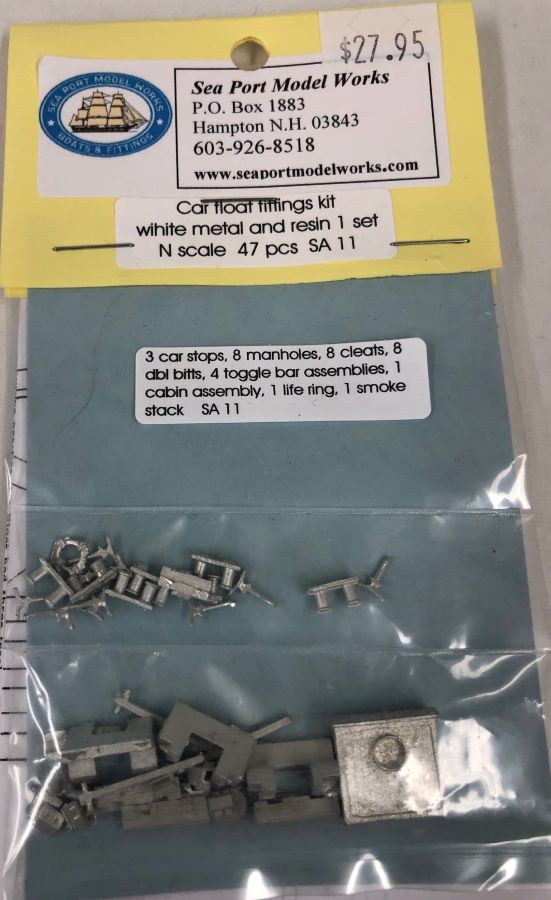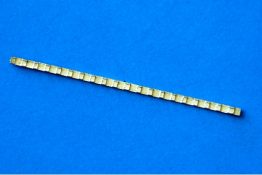Description
SA11 Car Float Fittings Kit (47 pieces in kit)
White Metal
N Scale
47 Piece Total includes: 3 Car Stops (2 pc), 8 manholes-hatches, 8 cleats, 8 double bitts, 4 toggle bar assemblies (16 pcs – 12 toggle pockets, 4 toggle bars), cabin dog house (2 pcs – 1 cabin, 1 light), 1 life ring and 1 smoke jack.
Toggle bar assembly is deck equipment that allows the barge to connect and stay secured to the dock or pier
(1) kit in pack (
N application. Review the size to determine if it will meet your requirements
More Information: Who used Car Floats to move freight? Just to name a few: the NYNH&H, NYC, B&O WM. ERIE, CP, Cross Harbor RR, PRR. Some RRs used Car Ferries but that’s another story.
Car Float operations were used whenever a railroad had to cross a body of water and bridge construction, for whatever reason, was impractical.
FLOAT CONSTRUCTION
Real Car Floats came in many sizes. I won’t pretend to be an authority on the subject, there’s just too many variations. I’ve seen pictures of old wood Floats that could just about hold three 40′ cars lengthwise. I assume it was double tracked, therefore holding six cars. Generally speaking, smaller Floats range around 150′ to 180′ then up to the 225′ range – from there to big league 350′ or more. Unless you are modeling a specific prototype, you can basically custom build your Float to fit available space allow-for on your track plan. Two or three tracks, it’s up to you, larger Floats generally used three tracks. In prototype practice, if a Float had three tracks, they were brought down to two at the apron. A “Gauntlet” was often used for this purpose. For model railroad use, the three tracks could be run straight through the apron and turn-outs used at the approach to the apron. Width of the float would depend on the number of tracks. Generally around 40′ for a float with three tracks. Free Board (how far does it stick out of the water): on a real Float it would depend on how it’s loaded. For model use, about 6 or 7 feet 3/4″ or 7/8″ would look okay.


